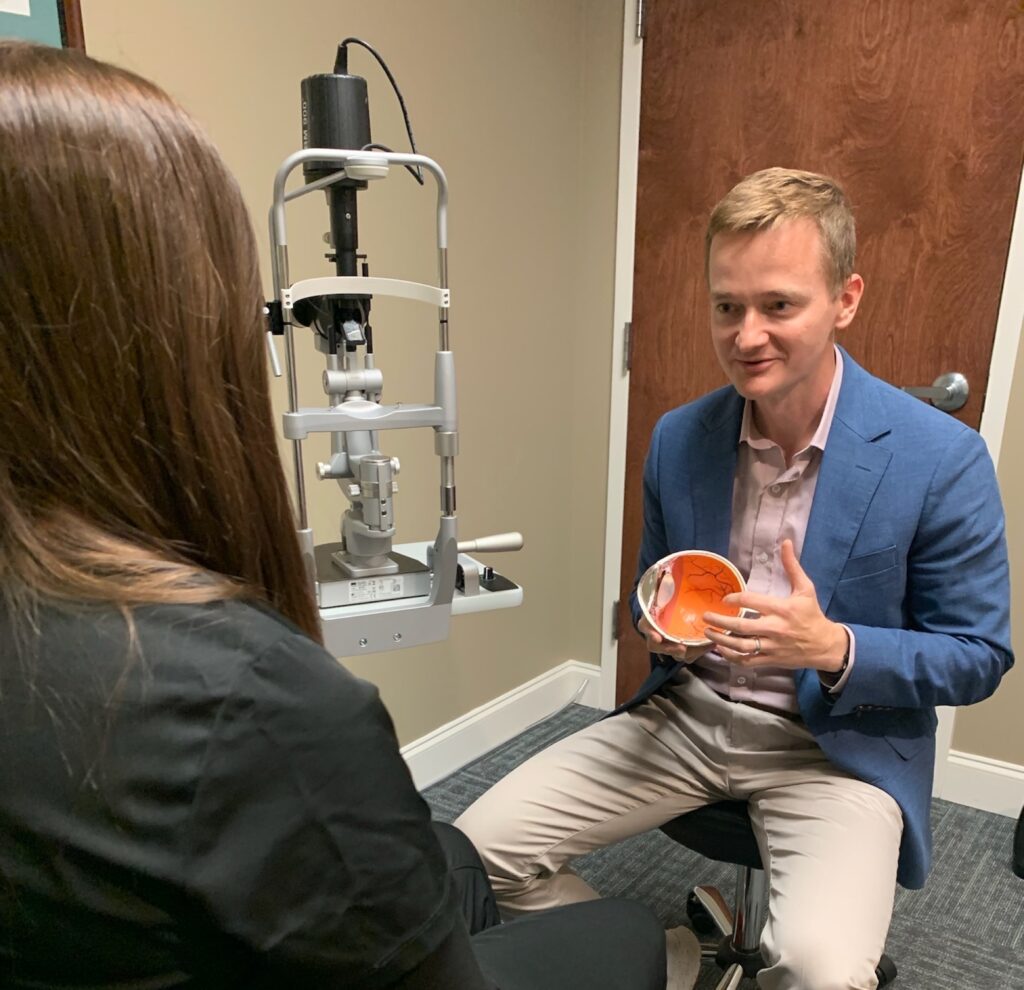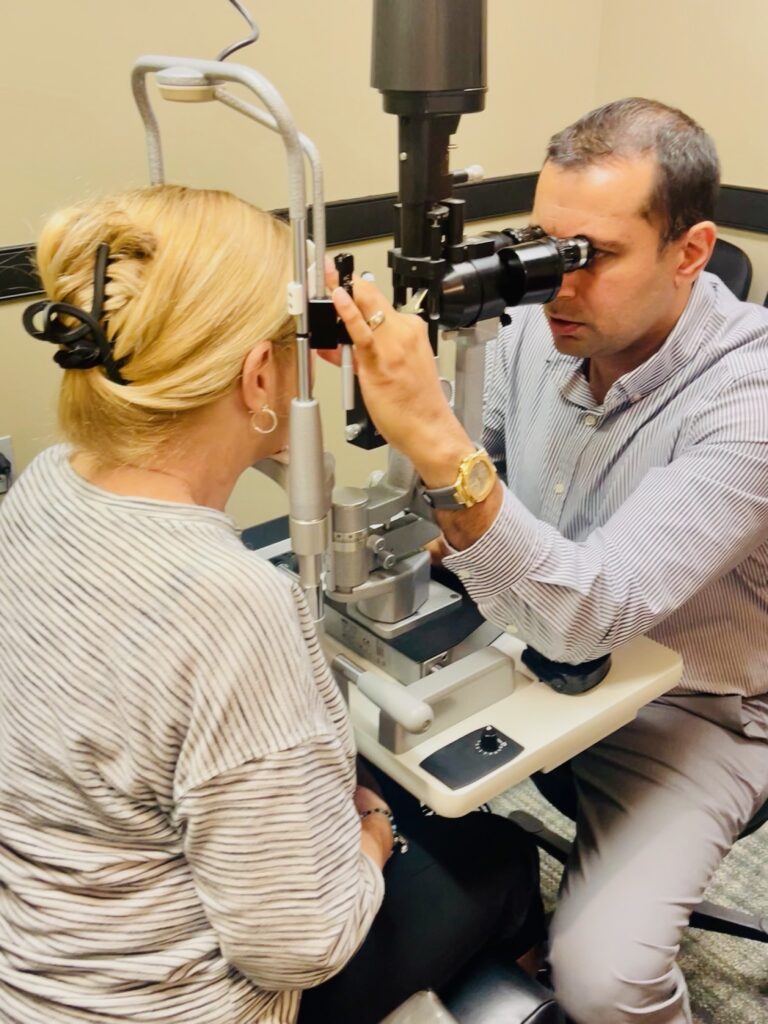Central and Branch Retinal Vein Occlusion
A central retinal vein occlusion is an obstruction or blockage of the main vein of the retina. A branch retinal vein occlusion is an obstruction or blockage of separate vein in the retina. The blockage usually occurs from a small blood clot and could be described as a “stroke” in the eye. Arteries bring fresh nutrients and oxygen-rich blood to the tissues, and veins drain away that oxygen and nutrient-depleted blood back to the heart. While blood flow into the eye is important, blood flowing out is equally important to maintain circulation. When the outflow of the eye becomes blocked, like during a retinal vein occlusion, the blood has no place to go and gets backed up. Because of this, it damages the blood vessel walls. Without a way for blood to flow out of the eye, the blood vessels rupture and bleed into the retina. The damaged veins also leak clear fluid into the retina, making it wet and swollen.

Example of Central Retinal Vein Occlusion

Example of Branch Retinal Vein Occlusion

This tends to mostly affect the center of the retina and is known as macular edema. This backup of flow is similar to what would occur if a tourniquet were kept in place on an arm for too long. Retinal function is impaired by this bleeding and swelling. The degree of visual loss will depend on how extensive the blockage is and may result in significant vision loss.
Depending on the extent of the blockage, your vision may worsen, or remain the same. Vein occlusions can occasionally be complicated by the growth of abnormal blood vessels, which can result in bleeding into the vitreous jelly of the eye or a severe type of glaucoma called neovascular glaucoma. Careful follow-up examinations may help allow early detection and treatment of these potential complications.

Treating Retinal Vein Occlusion
A special in-office test called a fluorescein angiogram may be used to help confirm diagnosis or guide treatment. This test involves the injection of a colored vegetable dye into an arm vein to allow us to examine the retinal circulation. Photographs taken with a special camera document the test. The angiogram is valuable because it will demonstrate the extent of the diseased retina and even reveal hidden damage, providing critical information for both treatment and predicting visual recovery.
This is sometimes treated by injecting various medications into the eye, including steroids and vascular endothelial growth factor inhibitors (VEGF).
For more serious cases where abnormal vessel growth occurs, laser eye surgery may be utilized. In those rare eyes with bleeding into the vitreous that fails to respond to laser treatment, vitreous surgery may be needed to remove the blood.
Certain medical conditions increase the risk of developing these blood vessel blockages. The most common include hypertension (high blood pressure), diabetes, or atherosclerosis (hardening of the arteries, and especially carotid artery narrowing).
Referral to your primary care physician to be reevaluated for these conditions is essential. Recognizing and controlling these medical conditions may prevent these blood vessel blockages from recurring in this eye, the other eye, or other parts of the body.
